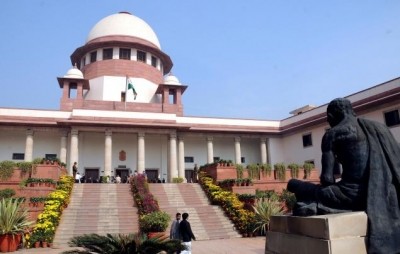
New Delhi, The Central government on Tuesday told the Supreme Court that on the issue of identification of minorities at the state level, it has held consultative meetings with all states and other stakeholders, and 14 states have furnished their views so far.
A bench of Justices S.K. Kaul and A.S. Oka was informed by the Centre's counsel that it has not received comments from remaining 19 state governments and Union Territories.
The top court then gave 6 weeks' time to Centre to bring on record the comments of the remaining states and Union Territories in the matter.
Additional Solicitor General K.M. Nataraj, representing the Centre, said a status report has been filed by the Ministry of Minority Affairs on October 31. The bench noted that the issue cannot be decided suddenly and it is required to be examined thoroughly.
"That in view of the position stated above, it is humbly submitted that since the matter is sensitive in nature and will have far-reaching ramifications, this court may kindly consider allowing more time to enable the State Governments/Union Territories and stakeholders with whom the consultative meetings have already been held, to finalise their considered views in the matter", said a status report filed by Ministry of Minority Affairs, which was filed in response to a PIL filed by advocate Ashwini Kumar Upadhyay.
The report said that the 14 state governments, namely Punjab, Mizoram, Meghalaya, Manipur, Odisha, Uttarakhand, Nagaland, Himachal Pradesh, Gujarat, Goa, West Bengal, Tripura, Uttar Pradesh, Tamil Nadu, and 3 Union Territories, namely Ladakh, Dadra & Nagar Haveli and Daman & Diu, and Chandigarh have furnished their comments/views.
During the hearing, Upadhyay submitted that he had challenged the validity of section 2(f) of the National Commission for Minority Education Institution Act, 2004.
He cited Allahabad High Court judgment of 2007 judgement on a plea seeking quashing of May 2004 order passed by the state of Uttar Pradesh recognising 67 Madarsas for grant-in-aid. He submitted before the bench that this judgment has not been challenged.
Upadhyay submitted for 20 districts of the state, the high court said that considering the percentage of the population, Muslims cannot be considered minorities and it was based on the 2001 census.
At this, the bench replied: "What are you asking? Can minority status be determined each district-wise?" It further queried Upadhyay, then, why not each street-wise? How can this be done?
Upadhyay's plea termed section 2(f) of the Act, which empowers the Centre to identify and notify minority communities in India, as "manifestly arbitrary, irrational, and offending".
After hearing arguments in the matter, the bench asked 19 states and UTs to communicate their stand to the Centre within four weeks of receipt of the court's order. It scheduled the matter for further hearing in January.
The top court was hearing the petitions, including the one filed by Upadhyay, which sought directions for framing guidelines for identification of minorities at the state level, contending that Hindus are in minority in 10 states.


.jpeg)

